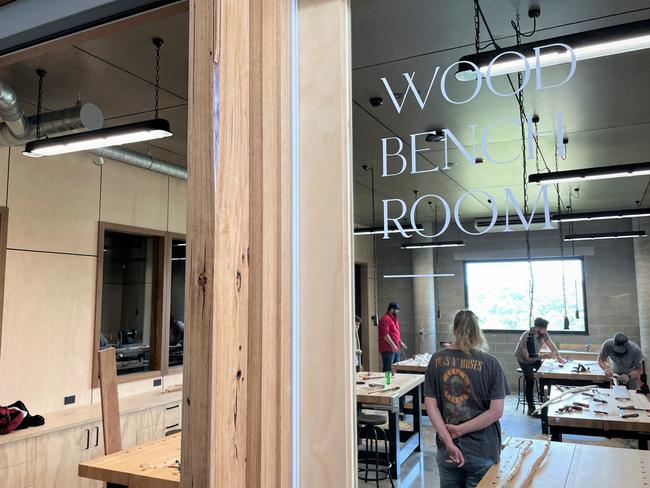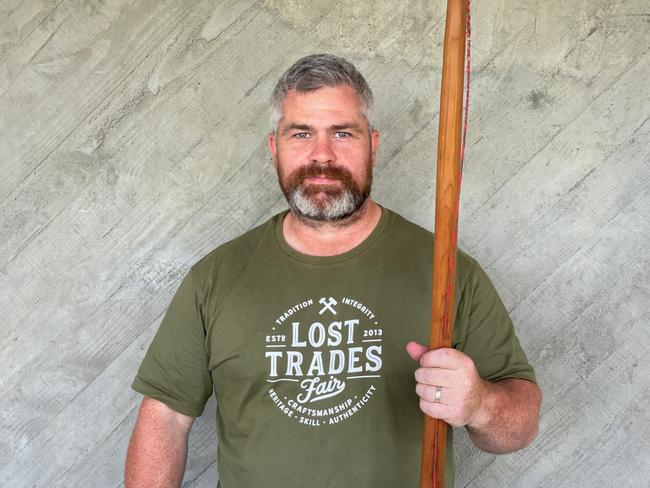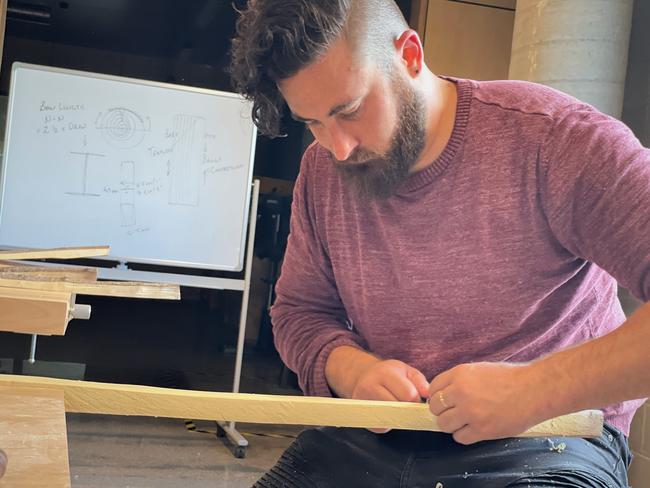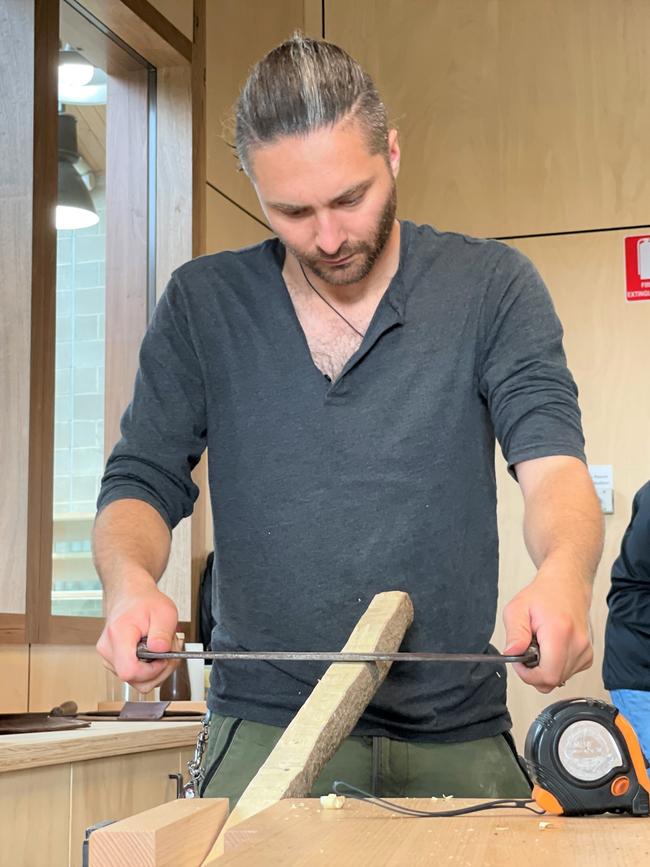Ballarat workshop inspires Victorians in traditional longbow-making craft
Ever fancied yourself a Robin Hood? Smythesdale bowyer Robert Geddes recently instructed seven students in the creation of an English-style longbow. Here’s how it went.
Ballarat
Don't miss out on the headlines from Ballarat. Followed categories will be added to My News.
The bow and arrow is so fixed in our culture that few young minds haven’t drawn an invisible bowstring in imitation of an historical or fictional hero.
So it should be no surprise that harnessing that fantasy and adding a touch of realism proves an attractive recipe for Victorians of all sorts.
Such is the accomplishment of Ballarat’s Rare Trades Centre, housed in the brutalist former gold museum beside Sovereign Hill.
The establishment does, however, provide more than the escapism of Sherwood Forest: it also helps to inspire and focus the mind, bring people together, and rescue human expertise from the atrophy of time – as some of the centre’s recent guests will attest.

Roughly a half-year back, federal funding erected a garrison of workshops among the museum’s concrete columns, replete with all from anvils to vices, plus the best in specialist handicraft machines and tools.
The centre is in its first flush as a business offering a tangible opportunity to partake in crafts familiar in their popular portrayal, but obscure to most people in their specifics.
We have a general awareness of, say, the blacksmith, the bow-maker, and the basket-weaver, but how many of us could really wrestle with the demands of those trades?
Self-taught Smythesdale bowyer Robert Geddes, who makes a living teaching English and history, in January instructed seven students in one of them: the creation of an English-style longbow.

Mr Geddes referred to himself as a “little boy who never grew up” who likes “flicking projectiles at things” with “string on a stick”.
He enjoys the making more than the shooting and is interested in the history of his favourite stringed weapon’s use throughout the Middle Ages and beyond.
But it was on a whim some years ago he first decided to actually make one.
His success led him down a “rabbit hole” of the somewhat arcane bowyer art.
“It’s important that people still retain the ability to make things,” Mr Geddes said.
“I don’t care whether it’s longbows; I don’t care whether it’s cooking, sewing, knitting, growing vegetables in your garden.
“I think that’s really critical to human health and wellbeing, that people are able to meet some of their own needs and solve some of their own problems instead of going and buying something that’s been imported from somewhere really cheaply.”

While acknowledging many old skills were unnecessary in the modern world, Mr Geddes said there was a risk of knowledge disappearing over time if it were not passed on.
“There are lots of trades and lots of tricks that we used to know how to do that have been lost,” he said.
“Some of that knowledge took thousands of years to create and gain, so if it’s not passed on, if someone jealously guards those trade secrets, we do lose them.”
The foundations of such knowledge pertaining to longbows took three days for Mr Geddes to impart to the Rare Trades Centre’s workshop participants, and required no prior knowledge or proficiency – though it did cost $885.
But the aspiring bowyers, all of whom left with a working bow shaped by hand from a stave of elm, hazelwood, or hawthorn, all appeared to agree that the price of admission was worth paying.
Their motivations for the effort varied from a desire for increased insight into an established archery hobby, to making props for historical re-enactment, for basic woodworking practice, and for plain old fun.

Enthusiastic Altona Meadows boy Oliver Venckus, 14, just might have discovered a lifelong hobby, having stumbled upon the longbow class when searching for a way to progress from carving spoons, mugs, and bowls – and, of what he seemed most proud, a wooden sword.
“My dad was a carpenter and I used to watch him work,” Oliver said.
“I thought it was fascinating, so I decided to get into his, not only field of work, but just working with wood.
“I enjoyed creating things, and it’s a very rewarding feeling when you create something.
“I’ve learnt lots. Mainly the tools, because my toolset isn’t very big, and I’d like to get into bow-making and be a bowyer.”

Over a weekend, the would-be bowyer saws his strip of wood to size, roughly shaves it down, tapers both ends to a point and attaches cattle horns, twists and loops a bowstring, and then continuously tests and adjusts his bow’s curvature (what is called tillering, apparently the most fragile and anxious part of the bow-making endeavour and at which point Mr Geddes reassured his students their knobbly sticks were “beginning to look like bows”.)
Once the bow has been shown capable of a predetermined draw length and weight, it is finally smoothed, oiled, waxed, and given a handle if desired.
It is not quick or immediately rewarding work, but it is steady and requires sustained concentration.

So while others might consider that agenda tedious, former soldier and policeman Troy McCandless calls it meditative.
The Gippsland man hopes to start his own hands-on workshops around the country as a contribution to healthier Australian minds.
The idea came to him from experience: having worked in a highly-structured career that “takes a toll” for two decades, he said that stepping away can cause feelings of being “lost”.
“Trying to fit into the private sector is very challenging, and then you add mental health on top of that,” Mr McCandless said.
“You feel very lost in those early days of leaving: you feel disassociated; you don’t know where you fit in the world.
“I find just working on a piece of timber or metal, having something at the end that you’ve made yourself with your two hands: it’s helpful for me.”
“It’s getting people back around the workshop bench, it’s getting people talking, it’s getting them away from the screen, off your mobile phone. It’s connection.”





